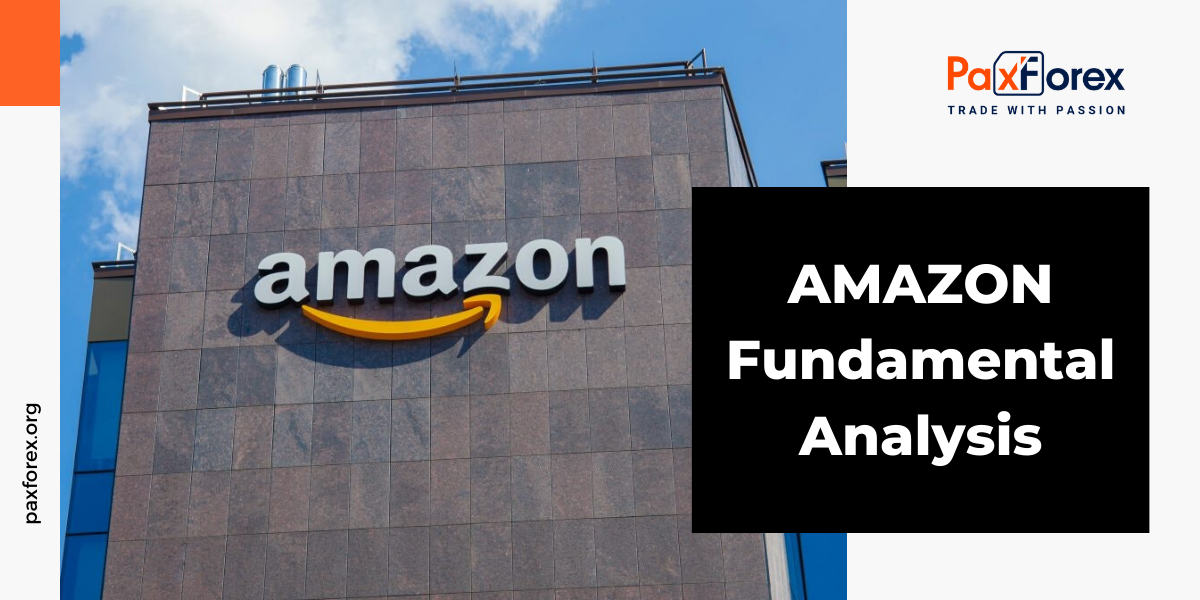
Source: PaxForex Premium Analytics Portal, Fundamental Insight
Amazon's CEO, Andy Jassy, recently released the company's annual letter to shareholders, where he provided a comprehensive review of the business's various segments, including the marketplace, advertising, and Amazon Web Services (AWS). Unlike his predecessor, Jeff Bezos, Jassy discussed the company's current standing in each area. The letter revealed that Amazon is venturing into the chatbot market with its large language model (LLM), causing excitement among investors. However, the letter also contained some subtle warning signals that could lead to a continuation of the company's stock struggles from the previous year, where it fell nearly 50 percent. Therefore, here are some of the reasons investors may want to lower their expectations for Amazon's performance this year.
- Amazon's business is not recession-proof
Jassy acknowledged that 2022 was a particularly challenging year in terms of macroeconomic conditions, with several simultaneous problems. He compared this situation to two previous recessions that Amazon had navigated, highlighting the company's ability to persevere by investing in long-term projects, such as Amazon Web Services (AWS), even during tough economic times. However, Jassy also noted that Amazon was not immune to economic downturns, as demonstrated by the dot-com crash, which led to a two-thirds decrease in the company's stock value during the 2008 financial crisis. Given that Amazon's business is cyclical and heavily influenced by consumer and business demand, the company experienced significant growth deceleration in 2022, and current market conditions are expected to remain challenging. Jassy's letter suggested that 2023 may also pose difficulties for Amazon due to signs of a weakening economy.
- AWS struggles with adversity
While Amazon is widely recognized for its e-commerce platform, investors are aware that the company's primary driver is AWS, its cloud infrastructure. In 2022, AWS generated $80.1 billion in revenue, a 29 percent increase, and recorded $22.8 billion in operating income, surpassing the company's total operating income of $12.2 billion, which included significant losses from e-commerce and other businesses. However, Jassy recently acknowledged that AWS's growth had slowed in late 2022, and this trend is expected to continue into 2023 due to the challenging macroeconomic environment. As a major revenue source for Amazon, AWS's growth deceleration may have a negative impact on the company's overall performance, especially since the e-commerce platform has also become a source of investor frustration.
- Amazon is still putting its best foot forward
Amazon's culture of long-term investment has been emphasized since its early days by founder Jeff Bezos. The company remains committed to inventing, experimenting, and investing in the long term, which has yielded both significant successes, such as AWS, Marketplace, and Prime, as well as failures, including Alexa, which is reportedly losing $10 billion per year. Jassy's shareholder letter highlighted the potential of various investments, such as grocery and international expansion, as well as new ideas like health care and Kuiper (a satellite internet service not yet launched). However, these investments are unlikely to yield profits in the near future and may impact the company's bottom line this year. Additionally, with Amazon's annual revenue already exceeding $500 billion, finding a new idea to generate significant growth may be challenging and could detract from the core components of the business. Amazon's stock has rebounded by 22 percent this year after falling sharply in 2022. However, given the challenging macroeconomic environment, a business turnaround is unlikely to happen this year. While this is not a reason to sell the stock, investors should be prepared for a prolonged period of patience until the overall economic environment shifts.
As long as the price is above 95.00, follow the recommendations below:
- Time frame: D1
- Recommendation: long position
- Entry point: 101.85
- Take Profit 1: 106.00
- Take Profit 2: 113.00
Alternative scenario:
If the level of 95.00 is broken-down, follow the recommendations below:
- Time frame: D1
- Recommendation: short position
- Entry point: 95.00
- Take Profit 1: 92.00
- Take Profit 2: 87.00













